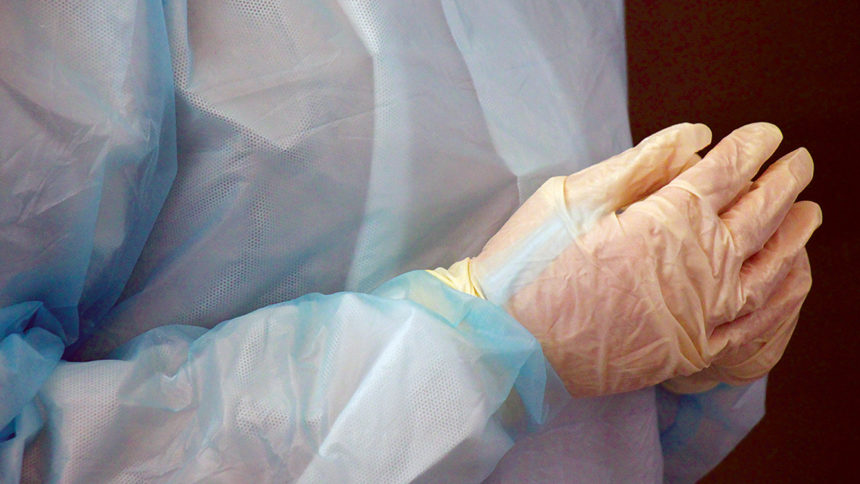
Despite caring for COVID-19 patients in high-risk situations, healthcare providers properly trained and using “appropriate” personal protective equipment avoided infection, an investigation in China has found.
During a six-to-eight-week deployment from their hometowns to hospitals in Wuhan, none of the 420 doctors and nurses participating in the study developed COVID-19-related symptoms. Upon returning home, all tested negative for antibodies to the virus, reported Min Liu, from Sun Yat-sen University, and colleagues.
All study participants had direct contact with patients with COVID-19 and performed at least one aerosol-generating procedure. Each of the providers was equipped with standardized personal protective equipment, including protective suits, masks, gloves, goggles, face shields, and gowns. They also received training in PPE use and in ways to reduce their exposure to infection while caring for patients. Participants worked in pairs to ensure PPE was correctly worn and removed.
Investigators attributed the lack of infections directly to correct PPE availability and use.
“Healthcare systems must give priority to the procurement and distribution of personal protective equipment, and provide adequate training to healthcare professionals in its use,” the authors concluded.
The study was published in the BMJ.
In related coronavirus news
Lawmakers, provider organizations raise alarms over PPE shortages: The United States continues to face personal protective equipment shortages, reports Inside Health Policy. What’s more, there likely won’t be enough N95 masks to meet demand until September, according to an administration official who spoke at the House Select Subcommittee on the Coronavirus Crisis late last week.
Mask materials study finds some protection better than none — including vacuum cleaner filters: When comparing traditional and non-traditional mask materials, investigators found a hierarchy of protection, with N99 and N95 masks being the most protective, followed by surgical masks and surprisingly, vacuum cleaner filters. Vacuum filters reduced infection risk by 83% for a 30-second exposure and 58% for a 20-minute exposure. Other non-traditional materials found to confer some protection: tea towels, cotton-blend fabrics and antimicrobial pillowcases.



